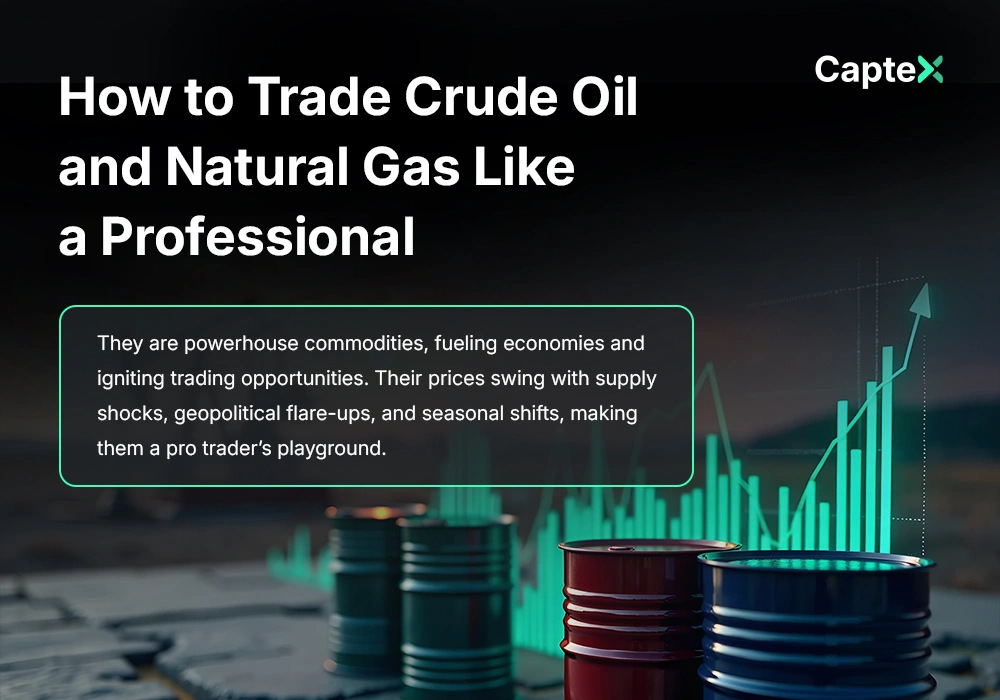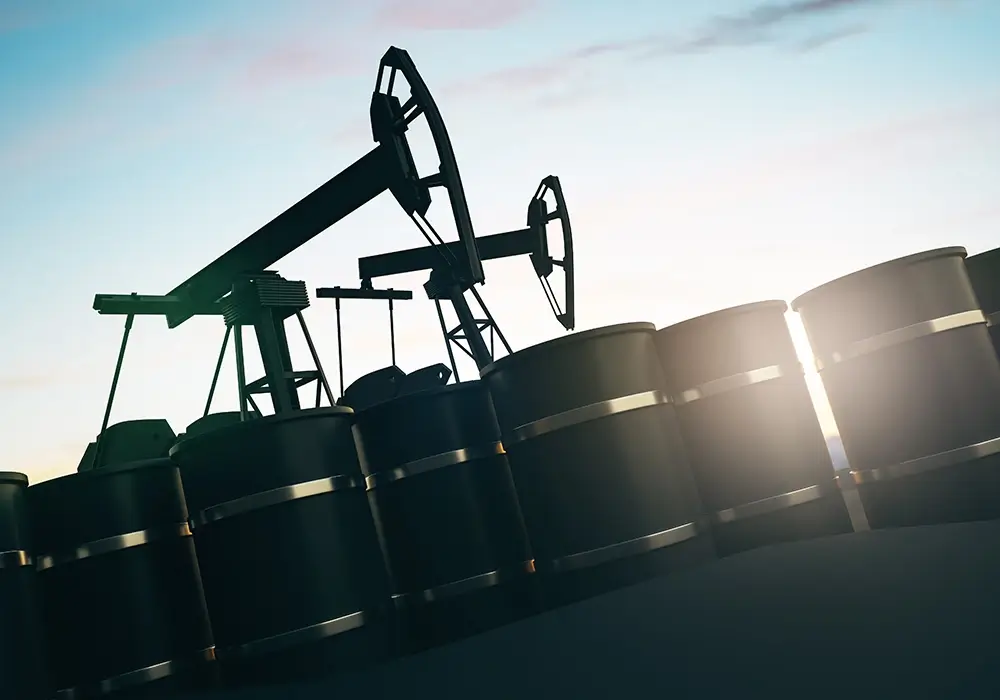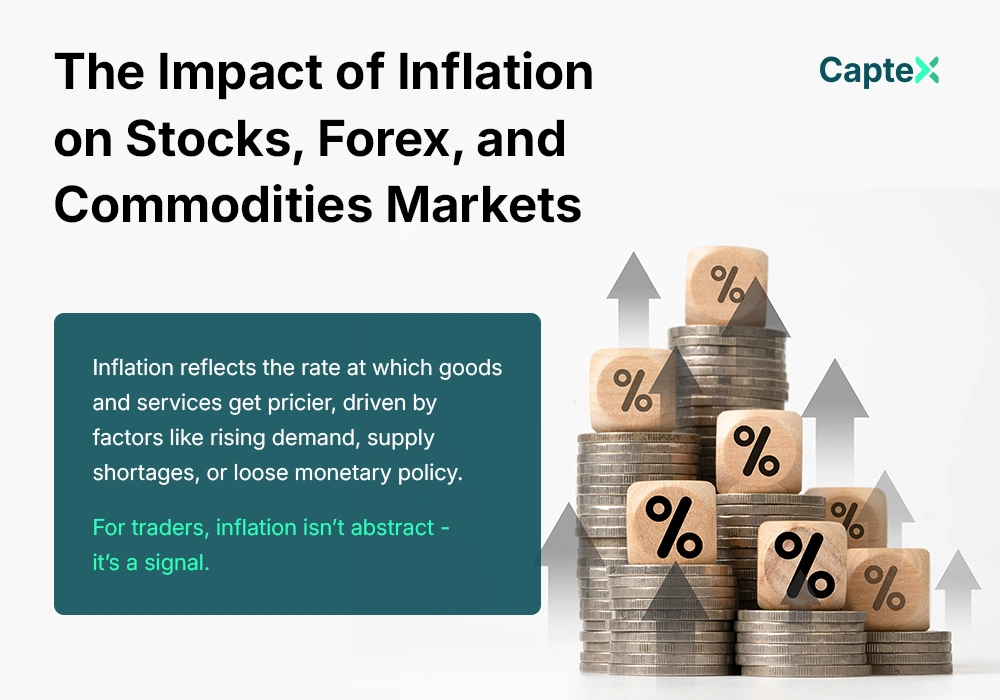Crude oil and natural gas are powerhouse commodities, fueling economies and igniting trading opportunities. Their prices swing with supply shocks, geopolitical flare-ups, and seasonal shifts, making them a pro trader’s playground. Mastering these markets demands a blend of strategy, timing, and market savvy. Here’s how to trade crude oil and natural gas like a professional, from understanding drivers to executing with precision.

Understanding Crude Oil Market Dynamics
Crude oil’s price hinges on a global tug-of-war between supply and demand. Major benchmarks like West Texas Intermediate (WTI) and Brent crude react to OPEC decisions, U.S. shale output, and refinery demand. A supply cut—like OPEC slashing quotas—can spike prices, while a glut from overproduction drags them down. Geopolitical risks, such as tensions in oil-rich regions, add volatility.
Demand shifts with economic health—booming industries guzzle oil, while recessions curb use. Inventory reports, like the weekly EIA data, signal oversupply or tightness; a surprise drawdown often lifts prices. Pros track these fundamentals, knowing a 5% move in a day isn’t rare when news hits.
Understanding Natural Gas Market Dynamics
Natural gas dances to a different tune, heavily tied to weather and regional supply. In the U.S., Henry Hub futures reflect storage levels, production, and heating or cooling demand. A frigid winter spikes usage, draining inventories and pushing prices up—think $4 per MMBtu jumping to $6. Summer surpluses, or mild seasons, can sink them below $2.
Unlike oil’s global reach, natural gas relies on pipelines and LNG exports, making it more localized. Shale booms flood supply, but hurricanes or freezes disrupt it. Pros eye storage reports—EIA’s Thursday release—and temperature forecasts, as a 10-cent swing can flip fast.
Key Factors Driving Price Movements
Both markets bow to unique catalysts. For oil, watch OPEC meetings, U.S. rig counts, and dollar strength—a stronger USD often softens oil prices. Geopolitical shocks—like sanctions on a big producer—ignite rallies. Natural gas leans on weather models, LNG export growth, and coal-to-gas switching in power plants.
Seasonality matters too. Oil peaks with summer driving; gas surges in winter heating. Economic data—GDP, manufacturing PMI—hints at demand, while supply-side surprises (pipeline outages, well freezes) jolt both. Pros blend these into a macro view, ready to pivot when headlines break.
Factors influencing oil and gas prices:
- Weather patterns shifting demand cycles.
- Geopolitical events disrupting supply chains.
- Inventory data revealing surplus or deficit.
- Currency strength impacting commodity costs.
- Economic growth driving industrial use.
Choosing the Right Trading Instruments
Professionals pick tools to match their style. Crude oil futures—like WTI contracts—offer leverage and liquidity, with one contract (1,000 barrels) moving $10 per $1 price shift. Natural gas futures (10,000 MMBtu) amplify smaller moves—a 10-cent jump nets $1,000. Both demand margin, so capital’s key.
ETFs provide simpler access—oil’s USO or gas’s UNG track prices without futures’ complexity. Options let you bet on direction or volatility with capped risk—buy a call if oil’s breaking out. CFDs suit short-term plays, though spreads vary. Pros often mix futures for precision and ETFs for ease, scaling to their risk tolerance.
Technical Analysis for Entry and Exit Points
Charts are a pro’s compass. For oil, a 50-day moving average signals trend—crossing above hints at buys, below at sells. Support and resistance—like $70 for WTI—mark reversal zones; breakouts with volume confirm moves. RSI above 70 flags overbought oil, below 30 oversold gas.
Natural gas loves Bollinger Bands—tight bands signal a big move, like a winter spike. MACD crossovers catch momentum—a bullish flip above zero on a 4-hour chart might trigger a gas long. Pros layer these, waiting for confluence—like RSI divergence at support—to nail entries and exits.

Fundamental Analysis for Long-Term Trends
Fundamentals anchor bigger plays. Oil’s long-term trend ties to OPEC+ strategy—extended cuts lift floors, while U.S. shale caps ceilings. EIA and IEA reports forecast supply-demand gaps; a projected deficit might mean oil’s heading to $90. Dollar weakness boosts both, as commodities priced in USD get cheaper globally.
Gas fundamentals pivot on storage and production. A summer build below five-year averages hints at a tight winter—prices climb. LNG export growth—like U.S. terminals ramping up—lifts demand. Pros study these, blending weekly data with seasonal bets for multi-month holds.
Risk Management Strategies
Volatility demands discipline. Pros never risk more than 1-2% per trade—on a $50,000 account, that’s $500 max loss. For oil, a $1 stop below $75 on a 1-lot future caps risk at $1,000, so size down if needed. Gas’s wilder swings—10 cents can hit fast—need tighter stops or smaller lots.
Diversify—trade oil and gas together to offset risks, or pair with forex like USD/CAD. Use options to limit downside—a gas put protects a long futures bet. Pros trail stops—locking 50% of a move—ensuring winners outweigh losers in these choppy markets.
Risk management essentials:
- Set stop-losses below key technical levels.
- Limit exposure to 1-2% of capital per trade.
- Use trailing stops to secure profits.
- Hedge with options or correlated assets.
- Adjust sizes for gas’s higher volatility.
Timing Trades with Market Reports
Reports are pro timing tools. Oil’s EIA Petroleum Status Report (Wednesdays) moves WTI—stocks dropping 2 million barrels might spark a $2 rally. Natural gas’s EIA storage data (Thursdays) jolts Henry Hub—a build below forecasts can jump prices 5%. OPEC updates or API previews add intraday sparks.
Trade the reaction, not the rumor—wait for volume to confirm post-release trends. A gas drawdown breaking resistance pairs with a buy; an oil surplus tanking support cues a short. Pros prep levels pre-report, striking when the market picks a direction.
Leveraging Seasonality and Weather Patterns
Seasonality’s a hidden edge. Oil peaks mid-year—June driving demand lifts WTI—while gas surges in winter, December to February. Shoulder months (spring, fall) see dips as usage wanes. Pros buy oil dips in April, gas in October, riding historical cycles.
Weather’s the X-factor. A polar vortex forecast spikes gas—buy futures as models firm up. Oil feels hurricanes—Gulf shutdowns cut supply, pushing prices. Check NOAA or AccuWeather 10-day outlooks; a cold snap or storm can turn a hunch into a win.
Building a Professional Trading Mindset
Pros trade with steel nerves. Oil’s $5 daily swings or gas’s 20-cent gaps test resolve—stick to your plan, not emotions. Losses happen; a blown stop doesn’t mean chase it. Review trades weekly—what worked, what didn’t—tweaking setups without overhauling.
Confidence grows from prep—know your edge, whether technical breakouts or EIA bets. Pros don’t guess; they analyze, execute, and adapt. For oil and gas, where volatility reigns, this mindset separates winners from the pack.
Bottom Line
Trading crude oil and natural gas like a pro blends art and science. Oil’s global pulse—OPEC, inventories, geopolitics—pairs with gas’s regional quirks—weather, storage, exports. Use futures or ETFs, lean on technicals for timing, fundamentals for trends, and ironclad risk rules to stay alive. Seasonality and reports sharpen your edge, but discipline seals the deal. Master these, and you’ll ride these wild markets with pro-level precision.




